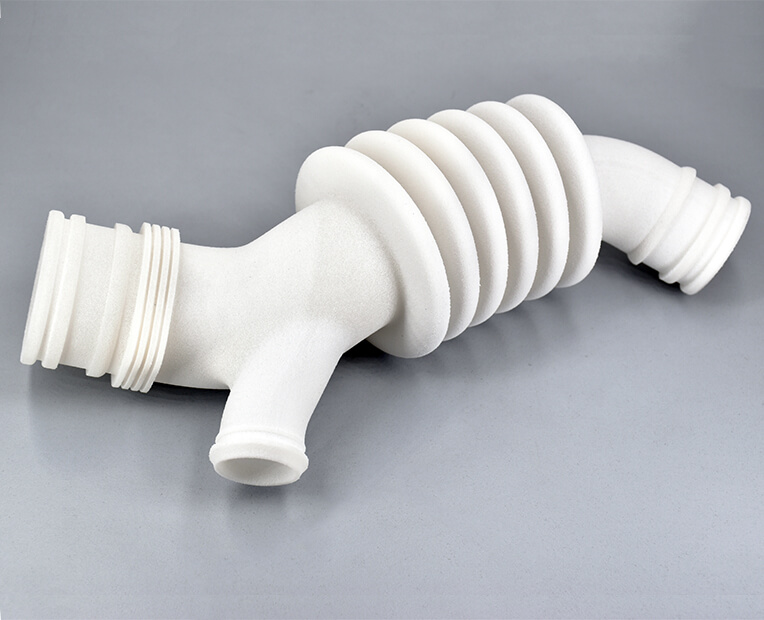Home » Los Materiales de Impresión 3D » Tecnología SLS para Impresión 3D » Ultrasint® TPU 88A
Ultrasint® TPU 88A
Toda la información, consejos y trucos para una impresión 3D exitosa, en TPU

Acceder
Si tiene dificultades accediendo a su cuenta, contáctenos.
Registrarse
Para empezar a realizar impresiones en 3D o cortes por láser, primero tienes que crearte una cuenta aquí. Una vez hecho eso, podrás subir archivos y generar instantáneamente los precios de tus componentes.
¿Ya tiene una cuenta? Iniciar sesión
Home » Los Materiales de Impresión 3D » Tecnología SLS para Impresión 3D » Ultrasint® TPU 88A
Colores

Acabados
Caracteristicas
El TPU de sinterización selectiva por láser (o SLS TPU) es un material de poliuretano termoplástico. Si está buscando un material resistente, flexible y gomoso, este TPU es la opción perfecta.
Con una buena resistencia después de la deformación y una alta estabilidad a los rayos UV, este SLS TPU ofrece numerosas ventajas para sus proyectos que requieren un material elastomérico. Al crear un diseño estructural interesante, las piezas se pueden imprimir en 3D para diversas aplicaciones, desde la industria automotriz hasta la industria del calzado. El material también ofrece buena resistencia a la hidrólisis, gran absorción de impactos y una superficie blanca lisa.
Este material está hecho para cumplir con los estándares de calidad específicos de la industria. Sin embargo, para asegurarse de aprovechar al máximo los beneficios de este material de TPU, tenga en cuenta que deberá respetar el grosor mínimo de la pared del material para evitar cualquier problema durante el proceso de fabricación aditiva. Asegúrese de consultar las pautas de diseño del material al crear su archivo 3D. Además, la información relacionada con el módulo de tracción, la resistencia química o la temperatura de deflexión térmica para este material SLS está disponible en la sección técnica de esta página de material.
Nuestro flexible TPU tiene excelentes propiedades mecánicas. De hecho, este material ofrece versatilidad y puede usarse para muchas aplicaciones diferentes.

Con su flexibilidad, Multijet Fusion TPU también se puede utilizar en la industria automotriz, por ejemplo, para crear componentes interiores de automóviles. Las cubiertas del filtro de aire, el cardán de fuelle, cualquier pieza flexible y resistente necesaria en la industria automotriz pueden imprimirse en 3D con TPU.

Las piezas que requieren el uso de una elasticidad similar a la goma o celosías flexibles se pueden imprimir fácilmente en 3D con este material. Desde la creación de prototipos funcionales hasta la producción, estas propiedades de los materiales ofrecen muchas oportunidades.

Gracias a su calidad, alta flexibilidad, absorción de impactos y rebote, nuestro TPU Multi Jet Fusion se puede utilizar para fabricar calzado, modelos ortopédicos y equipos de protección deportiva.
El precio de impresión de su diseño se calcula automáticamente en el momento en que se carga. A medida que modifica su objeto (cambio de material, acabado, tamaño, uso de control de lotes o función de vaciado, etc.) notará que el precio cambia automáticamente. El precio se basa en una serie de factores, incluido el volumen total, el tamaño del objeto y el cuadro delimitador, por nombrar algunos.
El tiempo estimado de envío también se calcula automáticamente a medida que se carga el objeto y cada vez que realiza una modificación en él. El tiempo de entrega debe agregarse al tiempo de procesamiento.
Para obtener más información, consulte nuestra página de precios.
La tecnología de sinterización selectiva por láser utiliza un láser altamente específico que sinteriza capas finas de polvo juntas capa por capa. Después de cada ronda de láser, la cama de impresión se baja y otra capa de polvo se extiende uniformemente por la parte superior para otra ronda de sinterización. Este proceso se repite a una altura de capa de 100-150 µm hasta que se completa el objeto. Después de que la impresora se enfríe, el bloque de polvo sinterizado se elimina de la impresora 3D y los objetos impresos se eliminan a mano. Una parte del polvo que no se sinterizado se recicla nuevamente en la impresora para una impresión futura.
Luego se cepilla el objeto, que elimina una gran parte del polvo, y se limpia con chorro de arena, lo que elimina el polvo fino que el cepillo puede haber perdido.
Tamaño máximo | Crudo : 196 x 176 x 315 mm |
El tamaño máximo de sus modelos está limitado por el tamaño físico de nuestras impresoras 3D: no se puede imprimir nada más grande que la cama de la impresora. |
| Espesor de capa | 100µm |
| Precisión | ± 0.3% (mínimo de ± 0.3 mm) |

| Espesor mínimo de pared (flexible) | 0.8mm |

| Espesor mínimo de pared con soporte | 1mm |
| Espesor mínimo de pared sin soporte | 1.2mm |

Detalles mínimos de altura y anchura | Grabado en relieve: 0.7 mm
|
| Relación Profundidad / ancho | 1/1
|
La precisión mínima de un detalle está determinada principalmente por la resolución de nuestras impresoras 3D. Sin embargo, durante el proceso de limpieza, también se puede perder una fina capa de detalles. Para que un detalle y un texto sean visibles, recomendamos seguir al menos nuestros tamaños recomendados.
Es posible que no se vean grabados y estampados particularmente finos, ya que la talla podría llenarse con un exceso de polvo que luego no se puede limpiar. Si un grabado en relieve o grabado es una parte esencial de su diseño, recomendamos hacerlo lo más profundo posible. Para garantizar una mejor eliminación del polvo (por lo tanto, una mejor visibilidad de los detalles), el ancho de sus detalles debe ser al menos tan grande como la profundidad.
| ¿Partes cerradas? | Si |
| ¿Partes entrelazadas? | Si |

Nuestro material tiene la capacidad de imprimir los diseños más complejos de nuestros materiales. Un ejemplo de diseño complejo es un volumen encerrado dentro de otro volumen, como una cadena o una conexión de rótula. Nuestras impresoras tienen la capacidad de imprimir una cadena completamente entrelazada, sin estructuras de soporte para eliminar.
| Distancia mínima entre paredes fijas | 0.5 mm |
| Separación mínima entre partes | 0.5 mm |

Para una impresión 3D exitosa se requiere un espacio libre mínimo entre los objetos para permitir que el material sobrante se expulse con arena. Si este espacio no se deja dentro del diseño, el objeto será sólido. Esto es particularmente importante para los objetos articulados, ya que el espacio que queda entre las paredes definirá la capacidad del objeto para moverse.
No se olvide
El espacio libre debe ser de al menos 0,5 mm, sin embargo, ese es el mínimo para objetos pequeños. Los objetos más grandes requieren más espacio entre sus partes. Nuestras camas de impresora se calientan durante el proceso, y los objetos más grandes se calientan por períodos más largos. Un espacio pequeño entre objetos grandes corre el riesgo de derretirse, ya que permanece bajo calor durante un largo período de tiempo. En algunos otros casos, se deben agregar agujeros para permitirnos drenar el exceso de material en polvo dentro del espacio libre.
| Hollowing ? | Yes: 5mm |

Nuestra herramienta de optimización de huecos en línea tiene la capacidad de reducir considerablemente el precio y el peso de una impresión al reducir la cantidad de material utilizado.
El uso de la herramienta requiere agregar dos agujeros a su modelo, lo que servirá como drenaje para el exceso de material en polvo dentro del objeto. El tamaño mínimo de estos agujeros está determinado por nuestro sitio web. De lo contrario, es posible vaciar su objeto manualmente en su software de modelado 3D.
| Value | Method | |
| Hardness Shore A | 88-90 | DIN ISO 7619-1 |
| Tensile Strength | 8 MPa | DIN 53504, S2 |
| Tensile Modulus / MPa | 75 MPa | ISO 527-2, 1A |
| Elongation at Break | 270 % | DIN 53504, S2 |
| Charpy Impact notched | no break | DIN EN ISO 179-1 |
| Rebound Resilience | 63 % | DIN 53512 |
Con el servicio de impresión 3D en línea de Sculpteo, está a solo unos clics de la impresión 3D profesional de SLS TPU. Su modelo 3D se imprime con la maxima calidad y se entrega directamente a su puerta.
 Conéctate con Google
Conéctate con Google Conéctate con Facebook
Conéctate con Facebook